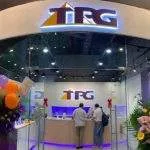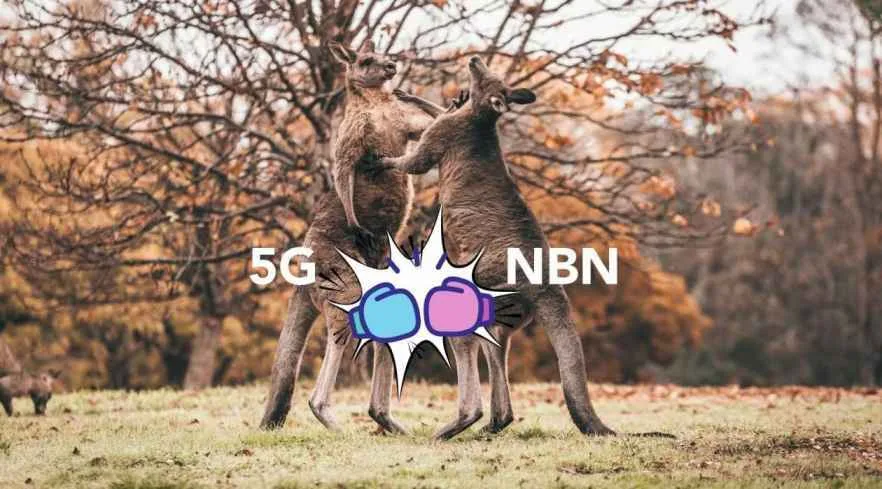5G VS NBN. Can the next generation in mobile network technology replace NBN as Australia’s go-to broadband connection?
With 5G now a reality for lucky select Australians, there is heated debate that is set to dominate the telecommunications world by 2022.
While it’s still early days for 5G in Australia, the new network is expected to reach gigabit speeds. In comparison, the NBN was met with controversy as it apparently stumbles – despite offering maximum speeds of up to 100 Mbps.
5G technology will help cope with the expected growth in cellular traffic as well as new emerging technologies. The nbn already has years of infrastructure behind it, while 5G technology continues to grow and evolve.
The idea of a national broadband network made redundant by mobile technology is about to be put to the test as Australian telecom companies prepare to offer 5G-powered alternatives to NBN to customers.
Telstra delivered peak download speeds of 4.2 gigabits per second (Gbps), four times faster than the fastest NBN plan available to homes, using 5G technology.
In September Optus is geared up to launch two 5G wireless services priced at $75 a month and $90 a month respectively that on paper can easily go toe-to-toe against fixed-line NBN plans in the market.
The $75 a month plan promises maximum download speeds of 100 megabits per second (Mbps) and an average download speed of 85Mbps between the busy 7pm-11pm time slot.
The $90 a month plan, according to Optus, “currently delivers an average download speed of 214Mbps (between 7pm-11pm)”.
With the rollout of the NBN now 99 per cent complete, almost 90 per cent of homes connected to the network are on 50Mbps plans.
Just how big a slice the telcos end up stealing from NBN Co will come down to price. Not just the price charged for 5G services by the telcos but also the bitterly contested wholesale price the telcos have to pay to NBN Co to resell fixed-line NBN plans.
What are the Differences Between 5G and NBN?
5G is a wireless technology based on the deployment of new antennas on existing mobile phone towers to provide coverage for your current mobile phone. On the other hand, NBN is primarily a fixed line that relies on long fibre and copper lines to connect your home or business to the Internet. In some places, NBN uses 4G-powered fixed wireless connections to connect Australians to the Internet.
These differences have the same pros and cons that you would expect when comparing your mobile data to your home broadband. 5G requires no physical setup and is extremely flexible as you can simply pack your modem or handset and take it with you, for example, if you are moving to a new home if there is 5G coverage. However, NBN is tied to a specific room.
NBN Co says 5G competition is challenging its monopoly status
NBN Co identified the rise of 5G-based “fixed wireless” services by Optus and Telstra – which are increasingly being marketed as an NBN alternative to lower tier users – as an example of its monopoly grip on the home broadband market.
It is estimated that there were 50 billion devices connected to the internet at the time of launch of 5G in 2020. With this greater capacity of 5G, it will allow plan providers with the option of offering cheaper and unlimited mobile data plans
Reliability..
When it comes to the NBN, speed can be affected by a variety of issues we’ve already addressed, including the type of connection you have, congestion on the network and the quality of your modem.
Meanwhile, 5G reliability will depend on factors like strength of signal, network congestion and the 5G frequency used. For now if 5G is available in your area then you’re likely to be able to get some speedy downloads, but it is important to take note of the aforementioned environmental factors as well.
Optus and Telstra are hard at work rolling out 5G coverage across the country with Vodafone following behind at a slightly slower pace. Telstra 5G mobile broadband plans are available now, Optus’ 5G home wireless broadband is out now for both Optus proper and Optus MVNOs, and the TPG group including Vodafone have released a range of 5G home internet plans too
Telstra head of networks, Nikos Katinakis, says 5G fixed-wireless services can compete with the NBN on quality and speed. But there’s one crucial caveat.
“From a mobile perspective, 2021 will be a year of choice because every smartphone maker will have a 5G handset out in the market….and if the devices are there we need to have the network ready as well.
“On the fixed-wireless side, Optus has already launched and we have publicly said we are going to have an offer out in the market, but it’s not going to be a wholesale replacement of the NBN,” Katinakis says.
Issues
The issue of providing ultra-fast wireless internet to lots of homes is the biggest problem for the telcos. However, that could change from next year once the three mobile operators get their hands on the mmWave (millimetre wave) spectrum.
mmWave has a lot more bandwidth on offer. It’s another step towards delivering on 5G’s potential with super-fast speeds and more capacity.







